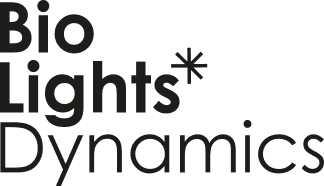Photobiomodulation in Physiotherapy
Functional recovery, pain relief, and muscle repair.
Photobiomodulation with ATP38 provides safe, non-invasive pain relief, anti-inflammatory effects, and tissue repair.
It’s an effective tool to support orthopedic, neurological, and sports rehabilitation, accelerating functional recovery.

Download the physiotherapy clinical book
Download the Aesthetic clinical book
Clinical Benefits
Relief of acute and chronic pain
Reduction of musculoskeletal inflammation
Repair and regeneration of soft tissues
Improved muscular and joint function
Use in post-operative clinics to optimize healing and reduce inflammation
Support for neuromotor and sports rehabilitation
“Integrating photobiomodulation into my physiotherapy sessions has transformed the way I help patients recover. The ATP38 enables me to reduce pain, accelerate tissue healing, and improve mobility — all without the need for medication or invasive procedures. It’s an invaluable complement to manual therapy and exercise.”
Jean Michel Serra – Physiotherapist
Before & afters

After a serious mountain bike crash on rocky terrain, the patient presented with:
• A large contusion on the face, with significant swelling and bruising.
• Superficial open wound and abrasion.
• Diffuse facial pain, tenderness to touch, and limited expression due to swelling.The treatment plan focused on relieving pain & swelling quickly, accelerating wound healing, clearing bruises, and minimizing scarring — using Photobiomodulation (PBM) with the ATP38 device over 8 consecutive days.
With the ATP38 protocol, the patient achieved a strong recovery in 8 days, with resolution of pain, closure of the wound, fading of the bruises, and restoration of normal skin tone and texture.
Backed by Clinical Research
Physiotherapy and Pain Management
6 STUDIES
1. Leal-Junior, E. C. P., et al. (2015) “Effect of photobiomodulation therapy (PBMT) on exercise performance and markers of muscle damage: a systematic review and meta-analysis.” Lasers in Medical Science, 30(2), 925–939. PBM applied before or after exercise reduces muscle damage, enhances recovery, and improves performance.
2. Effectiveness of Low-Level Laser Therapy in Patients with Discogenic Lumbar Radiculopathy: A Double-Blind Randomized Controlled Trial.
Read more
3. Mechanisms and applications of the anti-inflammatory effects of photobiomodulation.
Read more
4. Bjordal, J. M., et al. (2006) “A systematic review with meta-analysis of low-level laser therapy (LLLT) in lateral elbow tendinopathy (tennis elbow).” BMC Musculoskeletal Disorders, 7:55. PBM significantly reduced pain and improved function.
Read more
5. Stausholm, M. B., et al. (2019) “Efficacy of low-level laser therapy on pain and disability in knee osteoarthritis.” BMJ Open, 9(10), e031142. PBM reduces pain and improves function in patients with knee osteoarthritis.
6. Glazov, G., et al. (2014) “Low-level laser therapy for chronic non-specific low back pain.” Acupuncture in Medicine, 32(6), 486–494.
Read more
Pain Management Studies
3 STUDIES
1. de Marchi, T., et al. (2012) “Effects of low-level laser therapy (LLLT) on pain, range of motion, and functional capacity in patients with knee osteoarthritis.” Lasers in Surgery and Medicine, 44(6), 430–436.
2. Medeiros, T. N., et al. (2014) “Low-level laser therapy improves pain, function, and quality of life in patients with fibromyalgia.” Lasers in Medical Science, 29(1), 353–360.
3. Photobiomodulation treatment in incomplete spinal cord injuries or peripheral nerve injuries: a comprehensive review.
Read more
